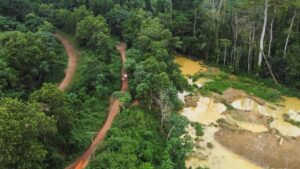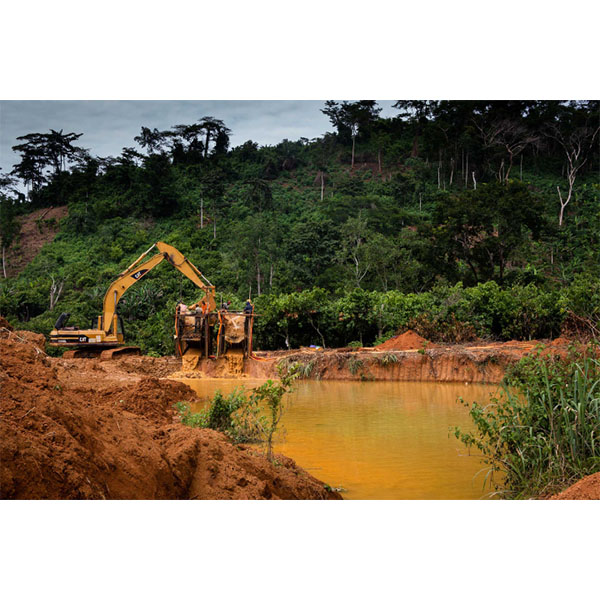On Wednesday, 6th August 2025, Ghana mourned the loss of eight of its sons who perished in a tragic helicopter crash en route to Obuasi, a town known as much for its rich gold deposits as for the battle raging against illegal mining, or galamsey. Among the dead were the Defence Minister, Dr. Edward Omane Boamah, and the Minister for Environment, Science and Technology, Hon. Ibrahim Murtala Mohammed. The group also included three high-ranking party officials and three military officers, all united in a shared commitment to fight illegal mining. These gallant men were headed to the ‘Cooperative Mining and Skills Development’ event, a crucial event focused on curbing galamsey, only to have their lives cut short in what many now describe as ‘Black Wednesday’, a national tragedy.

The helicopter crash has struck a deep chord across the country, uniting people from different political divides in grief and reflection. Yet, beyond the sorrow lies a plain and uncomfortable truth: the curse of illegal mining continues unabated, threatening not just our environment, but the very wellbeing of generations yet unborn. Galamsey continues to be a national crisis that touches the heart of Ghana’s identity and survival. Parliamentary data from February 2025 underscores the scale of destruction. Ghana’s total land area is about 23.8 million hectares, with 3.6 million hectares (15%) designated as forest reserves or protected wildlife areas. Out of 288 forest reserves, 44 are under serious attack from illegal miners, with over 5,000 hectares of forest already devastated, an area equivalent to about 7,500 football fields. Alarmingly, more than 9 of these reserves have been completely taken over, leaving the Forestry Commission without access. The crisis extends to the nation’s water systems. Rivers like Ankobra, Pra, Offin, Birim, Oda, Tano, and Bia, have reached water turbidity levels between 5,000 and 12,000 Nephelometric Turbidity Unit (NTU), far above the safe limit of 500 NTU, forcing the Ghana Water Company to shut down treatment plants in parts of the country. Beyond turbidity, mercury, cyanide, hydrocarbons, and other toxic chemicals are being recklessly discharged into rivers, jeopardising water safety for millions. The environmental damage is stark: forests stripped bare, fertile land rendered barren, and rivers choked with sediment and toxins. The consequences are more than ecological; they are deeply human. Villages once thriving on farming and fishing now struggle with infertile land and unsafe water. Mercury poisoning has been linked to developmental defects in newborns and neurological disorders in adults, a silent crisis spreading quietly in mining communities.

According to the Ashanti Regional Minister, the Cooperative Mining and Skills Development Programme, the event the deceased officials were travelling to was part of the government’s sustained effort to promote responsible mining. This initiative seeks to organise small-scale miners into cooperatives, allocate them specific mining concessions, and place operations under trained supervision. It emphasises sustainable practices, mandatory land reclamation, and providing structured alternatives to illegal mining. Yet despite such programmes and legislative measures like Operation Vanguard and the amended Minerals and Mining Act, illegal mining persists. Enforcement is still weak, as the Minister of Lands and Natural Resources, Hon. Emmanuel Armah-Kofi Buah, indicated in February 2025 that, out of over 800 arrests in recent years, fewer than 40 led to convictions. The gap between policy and practice remains wide. Public opinion is sharply divided: some call for extreme deterrents like ‘shoot on sight,’ while others stress the need to uphold human rights and due process.

This fight cannot be left to the government alone. Chiefs, traditional leaders, and local communities must actively protect their lands. Citizens must reject the lure of quick riches from galamsey, and buyers should refuse gold from illicit sources. Collective vigilance is needed. The helicopter crash tragedy underscores the stakes. The officials and soldiers who died were on a mission to defend Ghana’s environmental future, one threatened by ecological collapse, public health crises, and lost economic opportunities. Their sacrifice demands that every Ghanaian ask: What legacy will we leave for our future generations?

Imagine a Ghana where rivers run clear again, where farms flourish, and where children grow up free from mercury’s shadow. That vision is within reach but only if we act decisively, combining strong enforcement with community mobilisation, long-term planning, and unwavering political will. The fight against galamsey is a fight for Ghana’s soul. It demands unity, courage, and above all, immediate action. We owe it to those we have lost, to those at risk, and to the generations who will inherit this land. If we fail, we betray not just the environment, but the very essence of being Ghanaian, custodians of a rich heritage and guardians of our collective future.

writer:
Esther Nana Efuah Kumi Rockson
+233 (0) 548 3938 39





